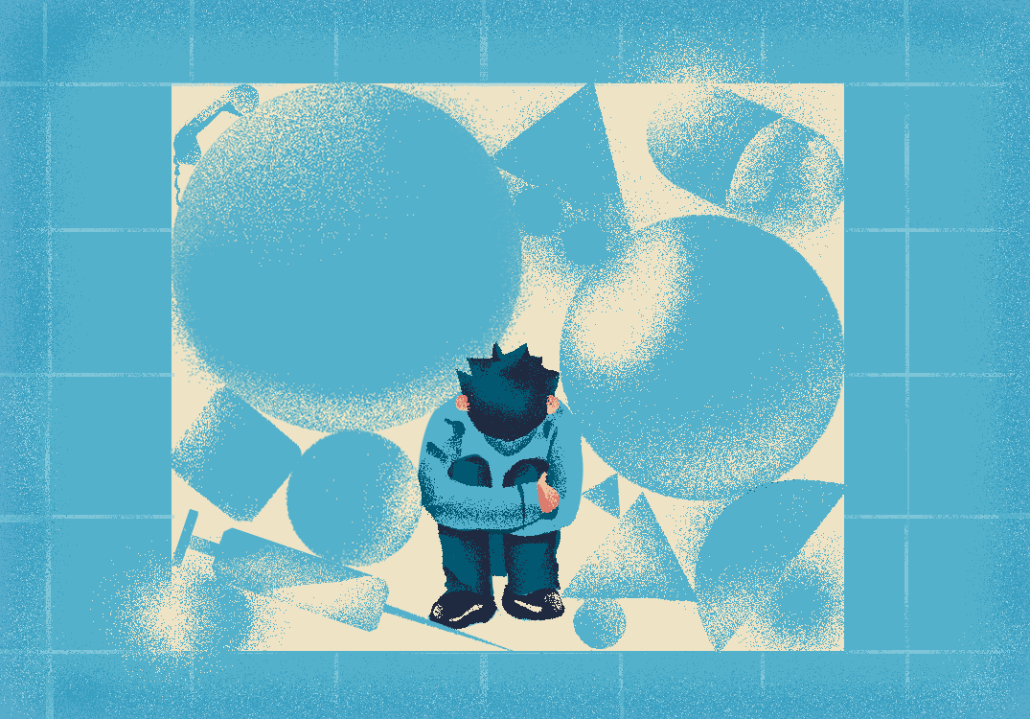Mental health and punishment as a treatment

At 14, I was put into a mental health institution. Although hesitant, I was relieved to know I would be getting the help I needed. While there, I discovered this was not the case. The for-profit hospital was more focused on the constant stream of patients, rather than the well-being and mental health of the patients.
Across the United States, facilities like the one I went to have been accused of neglecting, abusing, violating and restraining children. Luckily, people have begun speaking up about their experiences and working to enact change in the industry, but it is mind-blowing that this kind of action is even necessary. Why are children receiving punishment instead of treatment? And what message does that send to kids and teens who often already struggle with self-esteem and trust issues?
In an interactive New York Times article titled “Can You Punish A Child’s Mental Health Problems Away?” published in October 2022, a child who was treated in Texas tells a story about how she was forced to write an apology letter to her parents. It shocked me to hear this, as I was treated in a state thousands of miles away but had the same experience. I was forced to write apology letters to my parents, my best friend, my siblings and whichever “religious figure” I believed in. The message that this sends is guilt and shame. They tell you that your feelings are valid and fixable but contradictorily tell you to be ashamed of them.
One common punishment used in these institutions is restricting outside communication. It makes sense to take away personal devices and have certain visitation and call times for the patients to focus on themselves. However, what doesn’t make sense is hanging that over the patient’s head, using it as something that can be taken away at any time. I can still see the face of one of my friends in the wing when she was told she couldn’t call her parents cause she “acted out in group therapy” that day. All she had done was tear apart a styrofoam cup, using it like a fidget toy. But somehow, that was enough to cut off her communication with her parents. Keep in mind, she was legally a child, and yet was being told she couldn’t talk to her parents.
The phrase “booty juice” is known to many kids across the country who have been in a treatment facility. I never experienced it, but I watched many kids get their pants pulled down in front of everyone, publicly humiliating them and then getting stabbed in the “booty” with a needle containing a sedative (the “juice”). This was the basic response to any kid who may have been acting up. They overused it in my facility and it was more of a symbol: act up to authority and you’re getting the “booty juice.” What I didn’t realize until a few days in was that these kids weren’t getting taken back to their rooms as I had thought. They were getting taken to solitary confinement, a room that I once walked past by accident that made my stomach drop to the floor. It didn’t have a light, there was a thick lock on the door and one rectangular window facing the hallway. It was exactly what I imagine a high-level prison cell to look like, not a room for troubled children.
Speaking of prisons, probably the most dehumanizing part of this entire process is when — as a literal child — they handcuff you, put you in a straight jacket restricting all movement and throw you into the back of a police car. They tell you this is just the process of getting from the actual hospital to the treatment center, but it quite literally makes no sense.
The most shocking thing to learn about the children and teen inpatient mental healthcare industry is the lack of oversight from the government, even though the industry generates billions of dollars in profit every year. What these treatment centers do is lure compassionate and desperate parents who want to get help for their child and market the treatment as a lifesaver. Another way they draw in profit is through understaffing the centers, therefore, “keeping returns high but creating a more dangerous environment for kids and workers.” Also, many of these workers shared in the New York Times article that they received “minimal training beyond first aid” and were “paid near minimum wage.” Children’s lives are being put into the hands of undertrained, underpaid and overworked staff. On top of this, a study done by the U.S. Department of Justice horrifyingly revealed that in 2016 alone, six children died while placed in a center. They ruled only one of those six a suicide. Six lives that were supposed to be getting better through treatment, just gone.
Even with all the numbers and stories being shared, the government has still failed to take any initiative to solve the issue at hand. Some states are starting to enact state legislation — for example, a Utah law spearheaded by survivor Paris Hilton aims to limit the use of restraint and seclusion. While some progress is being made, it is still too little. Until real reform and closure of these facilities become a reality, children and teens around the country will continue to be physically and emotionally abused, and possibly even killed. Change needs to happen, and it needs to happen now.

